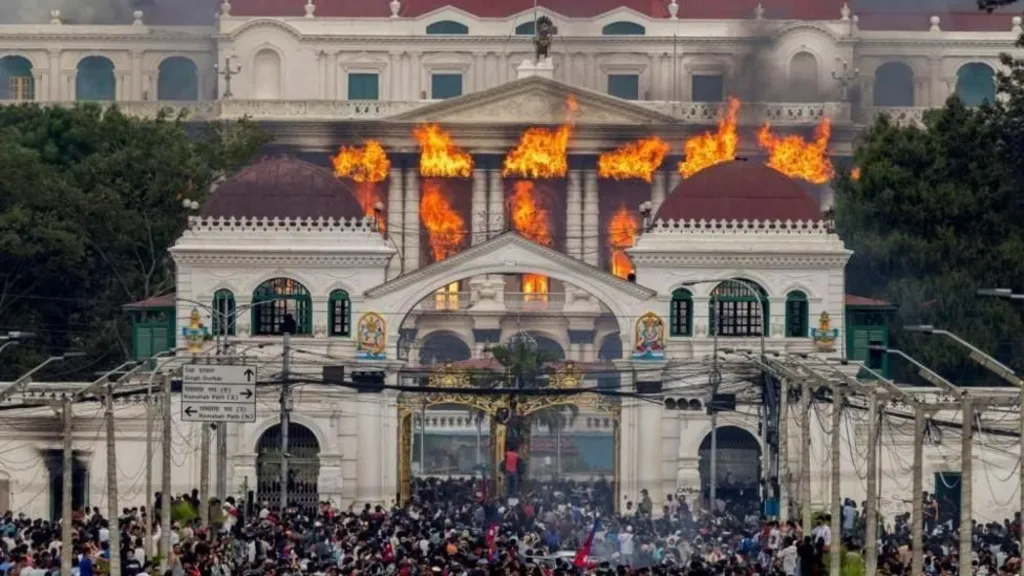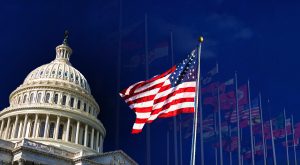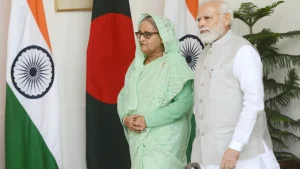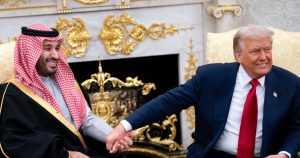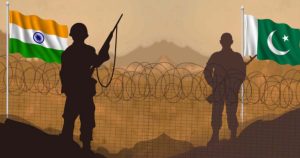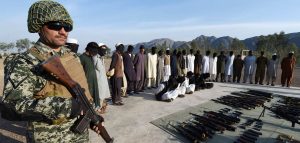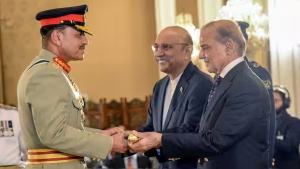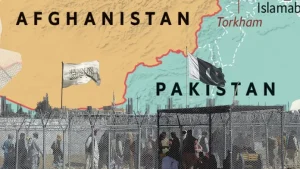Introduction
Nepal in September 2025 witnessed its most dramatic political upheaval since the abolition of the monarchy nearly two decades ago. What began as an apparently narrow policy dispute over the government’s decision to ban 26 social media platforms quickly escalated into a generational revolt, culminating in the resignation and exile of Prime Minister K.P. Sharma Oli. The scale and intensity of the protests, led primarily by Nepal’s digitally connected Generation Z (Gen Z), revealed deeper structural fractures, including economic stagnation, political instability, corruption, and a growing gulf between the country’s aging political class and its restless youth. The protests not only exposed the fragility of Nepal’s democratic institutions but also brought into sharp focus the extent to which domestic politics in Kathmandu are entwined with regional and global rivalries. For India, China, and the United States (US) alike, Oli’s fall was not merely the collapse of a government but a reconfiguration of the strategic balance in the Himalayas.
The Trigger
The immediate trigger for the uprising was the Oli government’s abrupt ban on Facebook, Instagram, TikTok, X, and several other social media platforms on September 4, 2025. Justified as an effort to curb “fake news,” the decision was widely viewed as an authoritarian attempt to silence dissent and monitor online discourse. For a generation whose political identity, social connections, and cultural expression were mediated through digital platforms, this was perceived as a direct assault on personal freedoms. Within days, protests swept Kathmandu, Pokhara, and other major cities, escalating into violent clashes with security forces and culminating in the torching of the Singha Durbar parliament complex.
But the protests were not only about social media. They reflected years of rising frustration. Youth unemployment hovered around 20 percent, a consequence of sluggish post-COVID recovery and the distortions created by heavy debt obligations to foreign lenders, particularly through Chinese-backed Belt and Road Initiative (BRI) projects. Corruption and nepotism were rampant, epitomized by the privileges enjoyed by the children of political elites, derisively labelled “Nepo Kids.” Plans to expand state surveillance and empower intelligence agencies to monitor phone calls added further grievances. For Nepal’s Gen Z that comprised roughly those between the ages of 13 and 28, the political establishment was increasingly viewed as corrupt, authoritarian, and out of touch with their aspirations.
The protests quickly took on a revolutionary character. By September 9, Oli had resigned and fled the capital, leaving power in the hands of Army Chief Ashok Raj Sigdel under a state of emergency. The death toll reached at least 51, more than 1,000 were injured, and a dramatic prison break saw over 12,000 inmates escape. The scale of the upheaval underscored both the fragility of Nepal’s institutions and the determination of its youth to assert their political agency.
Structural Discontent and Generational Divides
Although the protests seemed spontaneous, their roots were long in the making. Nepal’s political system has been plagued by chronic instability since 2008, when the monarchy was abolished and the country transitioned to a federal democratic republic. No elected government has completed a full five-year term. Instead, leadership has oscillated between parties aligned more closely with India, such as the Nepali Congress, and those leaning toward Beijing, such as Oli’s Communist Party of Nepal – Unified Marxist Leninist (UML) and the Maoist Centre. This pattern created an impression among citizens that governments were less accountable to the electorate than to external patrons.
The generational divide has compounded these frustrations. Nepal’s Gen Z, often the first in their families to enjoy digital literacy, is globally connected and aware of movements elsewhere. They drew parallels with Sri Lanka’s 2022 Aragalaya protests, Bangladesh’s 2024 student uprisings, and even global youth climate movements. Their discontent was not limited to economics but extended to demands for dignity, transparency, and a voice in shaping the future.
Culture also played an important role. Influential celebrities and social media figures openly sided with the protesters, amplifying their cause. Kathmandu’s mayor, Balendra Shah, a 35-year-old rapper turned politician, emerged as a symbolic figure of generational leadership. His rise highlighted the stark contrast between an aging elite and a younger class eager for systemic change.
India, China, and the Contest for Nepal
No analysis of Nepal’s crisis can be complete without considering the intense competition between India and China for influence in the country. Historically, Nepal was firmly within India’s sphere of influence, bound by geography, cultural ties, and economic interdependence. For decades, China recognized India’s primacy in Nepalese affairs. However, this equilibrium shifted dramatically after the 2006 People’s Movement that abolished the monarchy.
India played a pivotal role in that transition, working with Maoists it had once labeled as terrorists to broker peace and curtail the monarchy. Yet in doing so, it sowed seeds of resentment. Many Nepalis came to view India as having overstepped, denying them the chance to decide their own political future, including whether to preserve a constitutional monarchy. Critics argue that India’s “top-down” approach created an enduring legitimacy deficit for the republican order that replaced the monarchy.
China, meanwhile, saw opportunity. Alarmed by Western involvement in Nepal through Non-governmental organisations (NGOs), aid programs, and democracy promotion initiatives, Beijing began ramping up its presence. The BRI poured billions into hydropower, roads, and trans-Himalayan railway projects. Nepal’s elites, including Oli, became increasingly aligned with Beijing, both economically and politically. Oli championed Chinese investments, echoed Beijing’s position on contested border maps, and deepened security cooperation.
For India, this was intolerable. Border disputes over Kalapani and Lipulekh further soured ties, and Oli’s China tilt was seen in New Delhi as an encirclement strategy. His fall, therefore, represents not only a domestic political shift but also a strategic setback for Beijing and an opening for India to reassert influence, potentially through the Nepali Congress or even pro-monarchy groups supported by Bharatiya Janata Party (BJP)-aligned factions.
The Western Factor: NGOs, Democracy, and the Indo-Pacific
Beyond the India-China dynamic, Nepal has also become entangled in broader US-China competition. Washington views the Himalayas as a critical flank of its Indo-Pacific strategy, complementing its Quad partnerships with India, Japan, and Australia. American-funded NGOs and civil society organizations have long had a presence in Nepal, shaping development and amplifying democratic voices.
During the 2025 protests, these networks reportedly played a role in amplifying online dissent and framing the demonstrations as a democratic uprising. The symbolism was not lost – Oli’s resignation on September 9, coinciding with the anniversary of Mao Zedong’s death, was interpreted in some quarters as a calculated humiliation engineered by the West. For Beijing, it underscored fears that Nepal was being drawn into a “colour revolution” paradigm designed to weaken its periphery.
Western involvement is not new. After 2006, democracy promotion programs and development aid expanded significantly, often with Indian facilitation. While ostensibly neutral, these initiatives were perceived by China and its allies in Nepal as vehicles for Western penetration. The result has been a triangular contest in which Nepal is less an independent actor than an arena for great-power rivalry.
The Fall of Oli: A Turning Point
The resignation of K.P. Sharma Oli marked more than the end of a government. It highlighted the limits of Beijing’s political leverage in South Asia. Despite billions in infrastructure investment, public resentment over debt, corruption, and authoritarianism eroded support for his administration. Oli’s dramatic fall revealed that foreign backing cannot compensate for a domestic legitimacy deficit.
The aftermath placed the Nepal Army at the center of power, with General Sigdel assuming emergency authority. Interim leadership possibilities included figures such as former Chief Justice Sushila Karki and the charismatic Mayor Balendra Shah. Yet parliamentary fragmentation, with the Nepali Congress holding 88 seats, the Communist Party of Nepal (UML) 76, and the Maoist Centre 32, complicates the prospects for stable coalition governance.
Regional and Global Implications
For China, Oli’s ouster represents both a material and symbolic setback. BRI projects in Nepal now face uncertainty, and Beijing’s broader periphery strategy has suffered a blow. For India, the moment offers opportunity but also risk. While New Delhi may seek to rebuild ties and expand influence through cultural diplomacy and political allies, too overt a role could backfire, reviving nationalist resentment.
The US and its Quad partners see Nepal’s shift as a strategic opening. The protests fit into a wider narrative of democratic pushbacks against authoritarianism and offer potential entry points for governance support, development aid, and limited security cooperation.
For South Asia as a whole, Nepal’s turmoil adds to a pattern of fragility. In the last five years alone, Sri Lanka, Bangladesh, and the Maldives, have experienced political upheavals. The weakening of the South Asian Association for Regional Cooperation (SAARC), coupled with growing bilateralism and external interventions, increases the risk of militarization and instability along contested India-China zones.
Pakistan and the Himalayan Upheaval
Although Pakistan’s direct ties with Nepal are limited, the crisis carries significant indirect consequences. First, it reinforces the role of youth-led movements in reshaping South Asian politics. Just as Nepali youth mobilized against corruption and elite privilege, Pakistani youth face similar frustrations over unemployment, dynastic politics, and authoritarian governance.
Second, Oli’s fall undermines China’s network of partners in South Asia. If Nepal drifts closer to India and the West, Pakistan risks becoming Beijing’s only reliable ally in the region. This could have implications for the China-Pakistan Economic Corridor, particularly if China reallocates resources to stabilize vulnerable projects elsewhere.
Third, instability in Nepal could stretch India’s strategic bandwidth, diverting attention northward and offering Pakistan a limited window of breathing room. However, this will not fundamentally alter the entrenched disputes between New Delhi and Islamabad, particularly over Kashmir.
Finally, the symbolic aspect of Oli’s resignation on the anniversary of Mao’s death is not lost in Islamabad. It underscores the perceived capacity of the US and its partners to engineer political outcomes with symbolic resonance, raising concerns about the vulnerability of other pro-China governments in the region.
Toward a New Political Order?
The future of Nepal remains uncertain. Military oversight may stabilize the immediate crisis but risks entrenching authoritarianism. Interim civilian leadership under figures like Sushila Karki could restore some legitimacy, though coalition-building remains fragile. The monarchy enjoys pockets of support, but most young protesters reject outright restoration, preferring systemic reform.
What is clear is that Gen Z has emerged as a decisive political force. Their demands for accountability, inclusivity, and transparency will shape Nepal’s political trajectory for decades. Whether Nepal moves toward a more participatory democracy or succumbs to further cycles of instability will depend on how effectively its leaders, and its neighbours, manage this generational shift.
Policy Options
- For Pakistan
Nepal’s unrest highlights the possibility of potential shifts in Beijing’s priorities, and the rising force of youth-driven mobilization. For Pakistan, the priority should be to protect core interests – security, the China-Pakistan Economic Corridor (CPEC), and regional standing – while avoiding overexposure.
In the immediate term, Islamabad should adopt a cautious diplomatic posture, publicly call for calm without taking sides, and should discreetly reach out to both Kathmandu and Beijing to remain relevant.
Over the short term, Pakistan must insulate CPEC from reputational spillovers, demonstrate responsiveness to youth grievances through jobs and civic engagement programs, and handle media freedoms prudently to avoid triggering unrest.
In the medium term, Pakistan should diversify economic partnerships beyond China, institutionalize youth inclusion in governance, and strengthen monitoring of regional narratives to anticipate risks. This mix of diplomatic caution, domestic resilience, and strategic diversification offers Islamabad the best hedge against the ripple effects of Nepal’s upheaval.
- For China
China should protect its investments but recognize the limits of heavy-handed political patronage. Beijing should emphasize project transparency, community benefits, and debt sustainability. Public diplomacy that highlights development outcomes, combined with discreet political engagement to ensure contractual continuity, will help stabilize Beijing’s standing. Beijing should avoid overt interference or punitive measures that could feed anti-China sentiment.
- For the US and Western partners
Western actors should prioritize support for democratic institutions, good governance, and economic resilience, without overtly appearing to sponsor regime change. Offer technical assistance for electoral administration, judicial independence, and youth employment programs.
Humanitarian assistance should be made available if needed, and coordination with regional stakeholders is essential to prevent escalation or miscalculation.
- Cross-cutting regional measures
All regional actors should commit to non-interference, coordinated humanitarian relief, and a multilateral track to support Nepalese institution-building. Establishing a regional compact on transparency in infrastructure financing and debt restructuring assistance would defuse one of the common drivers of instability.
Nepal’s Gen Z uprising is a reminder that domestic legitimacy matters as much as external alignment. For Pakistan, the prudent path combines careful diplomacy, domestic reform to address youth grievances, protection of core strategic projects, and diversified partnerships. By prioritizing resilience and measured engagement, Islamabad can reduce risks presented by Himalayan instability while safeguarding long-term national interests.




